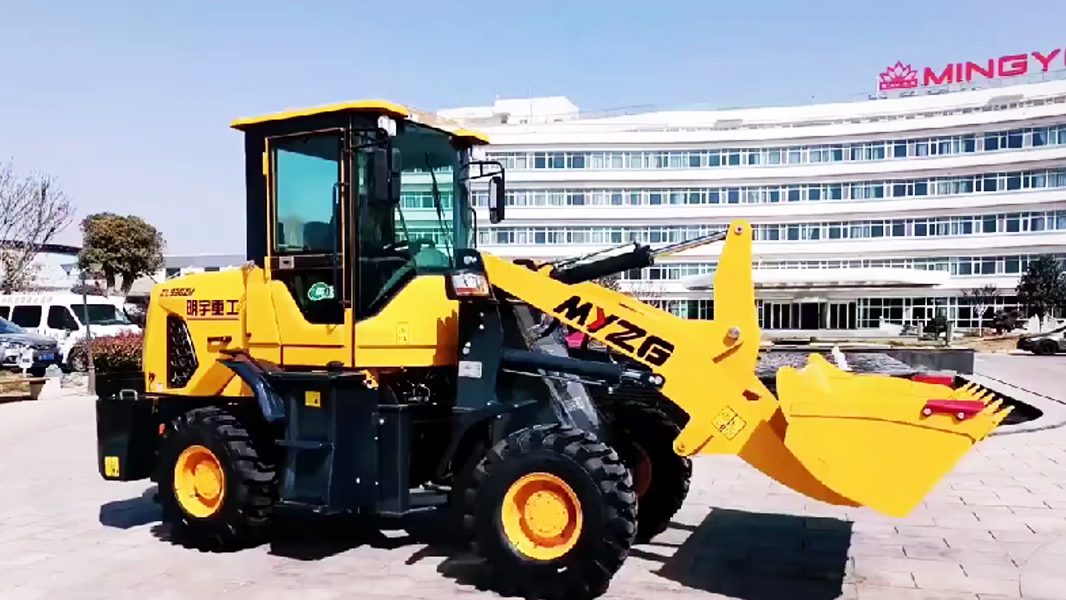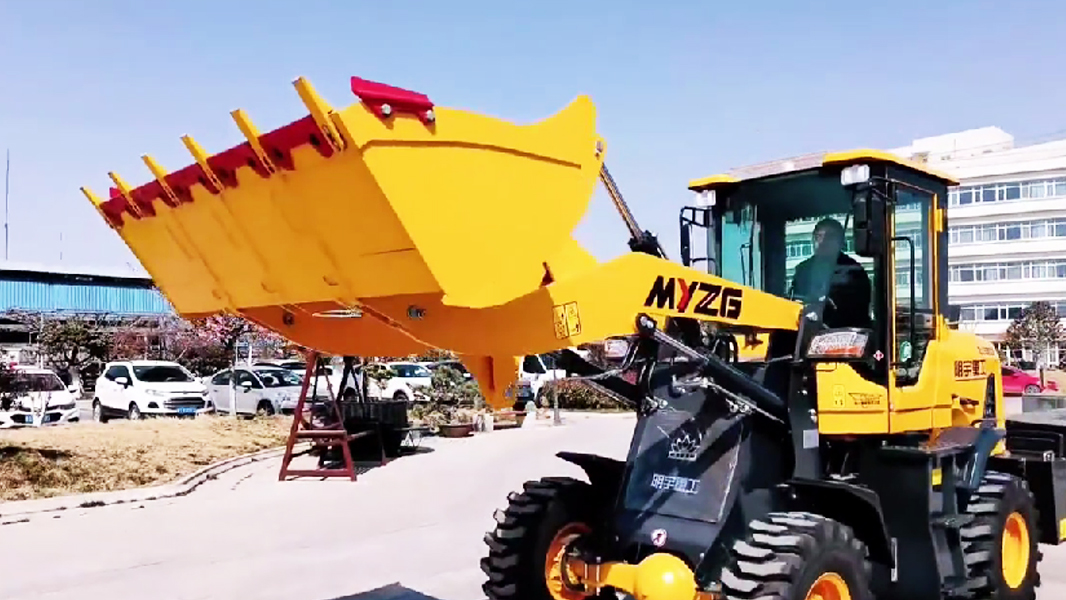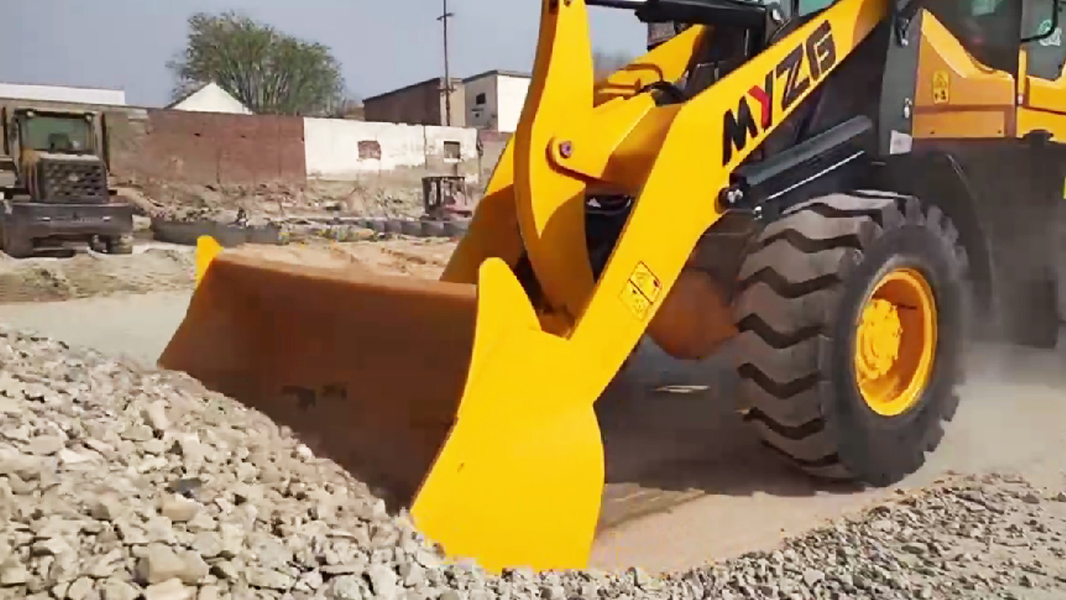I. Introduction
Excavators and wheel loaders stand as titans of the construction industry, their robust forms and immense power shaping landscapes and facilitating countless projects. While both are indispensable for heavy lifting and material handling, their distinct designs and functions often lead to confusion. This article aims to demystify the differences between these two workhorses, providing a comprehensive comparison of their designs, applications, and operational nuances. By exploring their unique strengths and limitations, we'll clarify how each machine plays a vital role in optimizing efficiency and productivity on construction sites and beyond.
II. Fundamental Design and Mechanics
A. Excavator Design:
Excavators are primarily categorized as tracked or wheeled. Tracked excavators, with their continuous track systems, excel in rough terrain, providing superior stability and traction for digging and heavy lifting. Wheeled excavators offer greater mobility on paved surfaces, enabling faster travel between job sites.
The hydraulic arm and boom are the excavator's defining features, allowing for a wide range of motion, including digging, lifting, and precise placement. The complex hydraulic system powers these movements, enabling significant force and control.
A rotating cab, typically offering 360-degree rotation, enhances the excavator's versatility, allowing operators to work efficiently in confined spaces and maneuver materials with precision.
The ability to interchange attachments, like buckets of varying sizes, hydraulic breakers, grapples, and augers, makes excavators highly adaptable to diverse tasks.
Wheel loaders are characterized by their wheeled chassis, which provides excellent mobility and speed on paved or relatively smooth surfaces. This makes them ideal for transporting materials over short to medium distances.
A large, front-mounted bucket is the wheel loader's primary tool, designed for scooping, lifting, and dumping bulk materials. The hydraulic system manages the bucket's movements, enabling efficient loading and unloading.
Articulated steering, where the machine bends in the middle, significantly enhances maneuverability, allowing wheel loaders to navigate tight spaces and operate efficiently in confined areas.
Wheel loaders have limited rotational ability compared to excavators.
C. Comparative Analysis:
Both machines rely on powerful diesel engines and sophisticated hydraulic systems, but their applications differ. Excavators use hydraulic power for precise digging and complex movements, while wheel loaders prioritize lifting and transporting bulk materials.
Excavator hydraulic systems are designed for high pressure and very controlled movements, where as wheel loader systems are designed for high flow and lifting power.
III. Primary Functions and Applications
A. Excavator Functions:
Deep digging and trenching are core excavator functions, essential for foundation work, utility installation, and pipeline construction. Their powerful digging force and precise control enable efficient excavation in various soil conditions.
Grading and leveling are accomplished with precision, allowing excavators to shape landscapes, prepare surfaces for construction, and create precise slopes.
Demolition and material handling are facilitated by various attachments, enabling excavators to break concrete, dismantle structures, and move debris efficiently.
Excavators find applications in mining, road building, general construction, and forestry, where their versatility and power are invaluable.
Material loading and transport are wheel loaders' primary functions, efficiently moving large volumes of materials like gravel, sand, and aggregate.
Site cleanup and maintenance involve removing debris, clearing obstacles, and maintaining site order, contributing to a safe and efficient work environment.
Stockpile management is streamlined by wheel loaders, which efficiently organize and move materials within stockpiles, ensuring optimal storage and retrieval.
Wheel loaders are essential in quarrying, aggregate handling, and large-scale material moving operations, where their speed and lifting capacity are crucial.
C. Side-by-Side Comparison:
While excavators excel in digging and precision tasks, wheel loaders prioritize bulk material movement. There is some overlap in material handling, but excavators are generally used for more precise, and or deeper digging. Wheel loaders are designed for high volume movement over shorter distances.
IV. Performance and Operational Differences
A. Mobility and Maneuverability:
Excavators, particularly tracked models, offer superior stability on uneven terrain, enabling them to operate in challenging conditions. Wheel loaders, with their wheeled chassis, provide greater speed and mobility on paved or relatively smooth surfaces.
Excavators often require more space to maneuver due to their tracked design, while wheel loaders' articulated steering allows for tighter turns and operation in confined areas.
B. Power and Lifting Capacity:
Both machines utilize powerful hydraulic systems, but their applications differ. Excavators focus on digging force and precise control, while wheel loaders prioritize lifting capacity and bulk material movement.
Lifting capacity in both machines is affected by factors like boom length, attachment type, and machine stability.
C. Precision and Control:
Excavators offer exceptional precision in delicate tasks, such as trenching and grading, due to their controlled hydraulic movements and versatile attachments.
Wheel loaders excel in efficiently moving large volumes of materials, prioritizing speed and bulk handling over precision.
D. Operational Cost, and Maintenance Differences:
Tracked excavators tend to have higher maintenance costs due to track wear and more complex hydraulic systems. Wheeled machines tend to have lower maintenance costs, but tire wear can be a significant expense. Fuel consumption varies based on task and machine size.
Operational cost must include the cost of the operator, and the type of work being completed.
V. Attachment Versatility and Customization
A. Excavator Attachments:
Various bucket types, including digging, trenching, and grading buckets, optimize excavators for specific excavation tasks.
Hydraulic breakers and hammers enable excavators to demolish concrete and rock, expanding their applications in demolition and construction.
Grapples and shears facilitate material handling, allowing excavators to move logs, debris, and scrap metal with ease.
Augers allow the excavators to drill holes for foundations, or other uses.
Different bucket types, including general-purpose, light-material, and rock buckets, optimize wheel loaders for various material handling needs.
Forks extend wheel loaders' versatility, enabling them to handle palletized materials and other loads.
Snow plows allow wheel loaders to be used for snow removal.
C. How Attachments Affect Usage:
The attachments allow for the machines to be used in a much wider variety of roles. The correct attachment is vital for the safety and efficiency of the machines operation.
VI. Choosing the Right Machine: Key Considerations
A. Project Requirements:
Matching machine capabilities to specific tasks is crucial. Excavators are ideal for digging, trenching, and precision work, while wheel loaders excel in bulk material movement.
B. Terrain and Site Conditions:
Evaluating ground stability and accessibility is essential. Tracked excavators are suitable for rough terrain, while wheel loaders are better suited for paved or relatively smooth surfaces.
C. Budget and Operational Costs:
Considering purchase, rental, and maintenance costs is vital. Tracked excavators may have higher maintenance costs, while wheel loaders may have higher fuel consumption.
D. When Both Machines Are Needed:
Many large projects benefit from both machines. Excavators can dig and prepare the ground, and then wheel loaders can move the materials that the excavators have dug.
VII. Conclusion
In summary, excavators and wheel loaders, while both vital heavy machinery, serve distinct roles in construction and related industries. Excavators excel in digging, precision work, and versatile attachment use, while wheel loaders prioritize bulk material movement and efficient transport. Selecting the appropriate machine based on project requirements, terrain, and budget considerations is crucial for optimizing efficiency and safety. Both machines are invaluable assets, and understanding their differences is vital for effective project management.
Post time:Mar.31.2025



